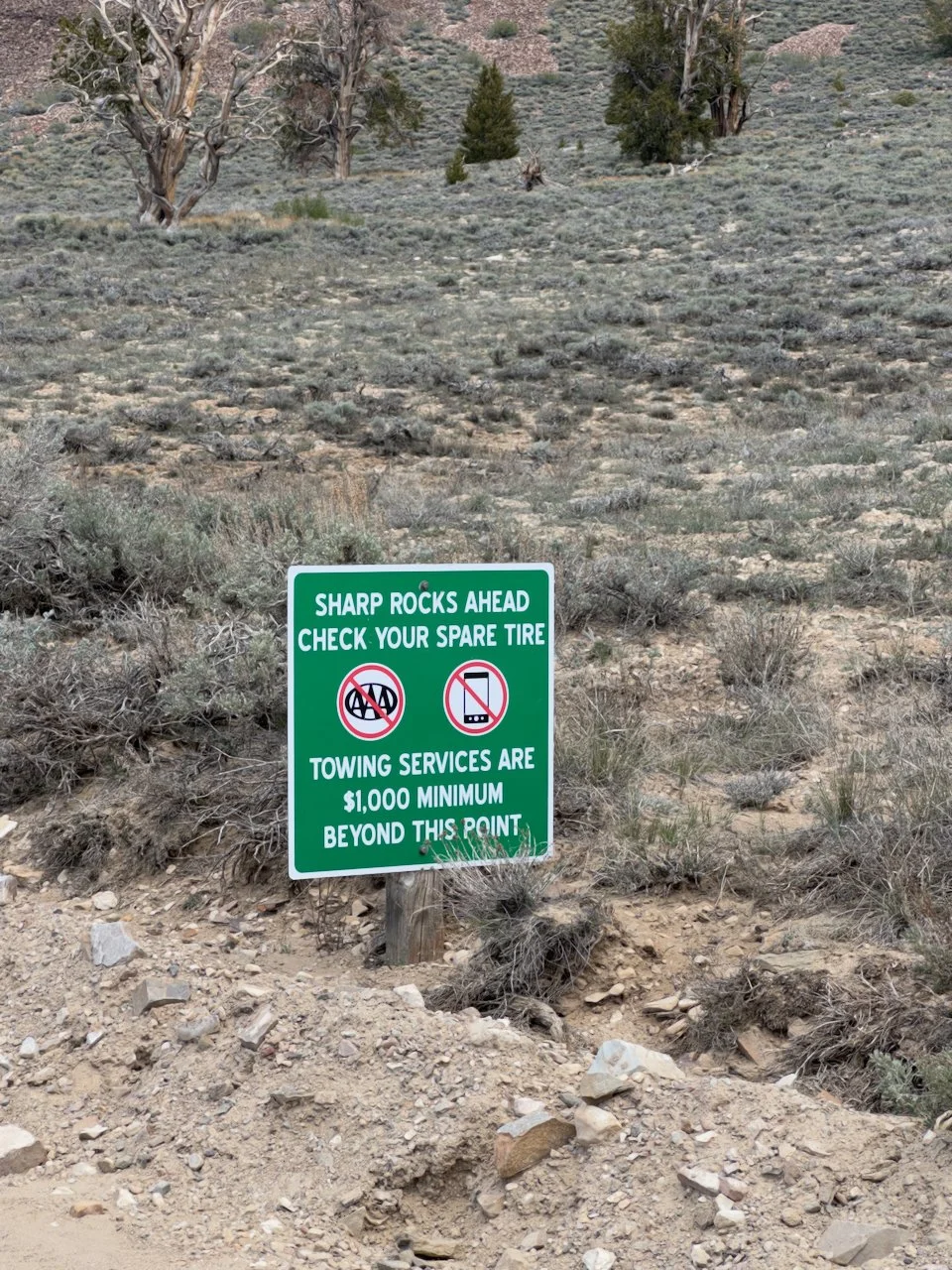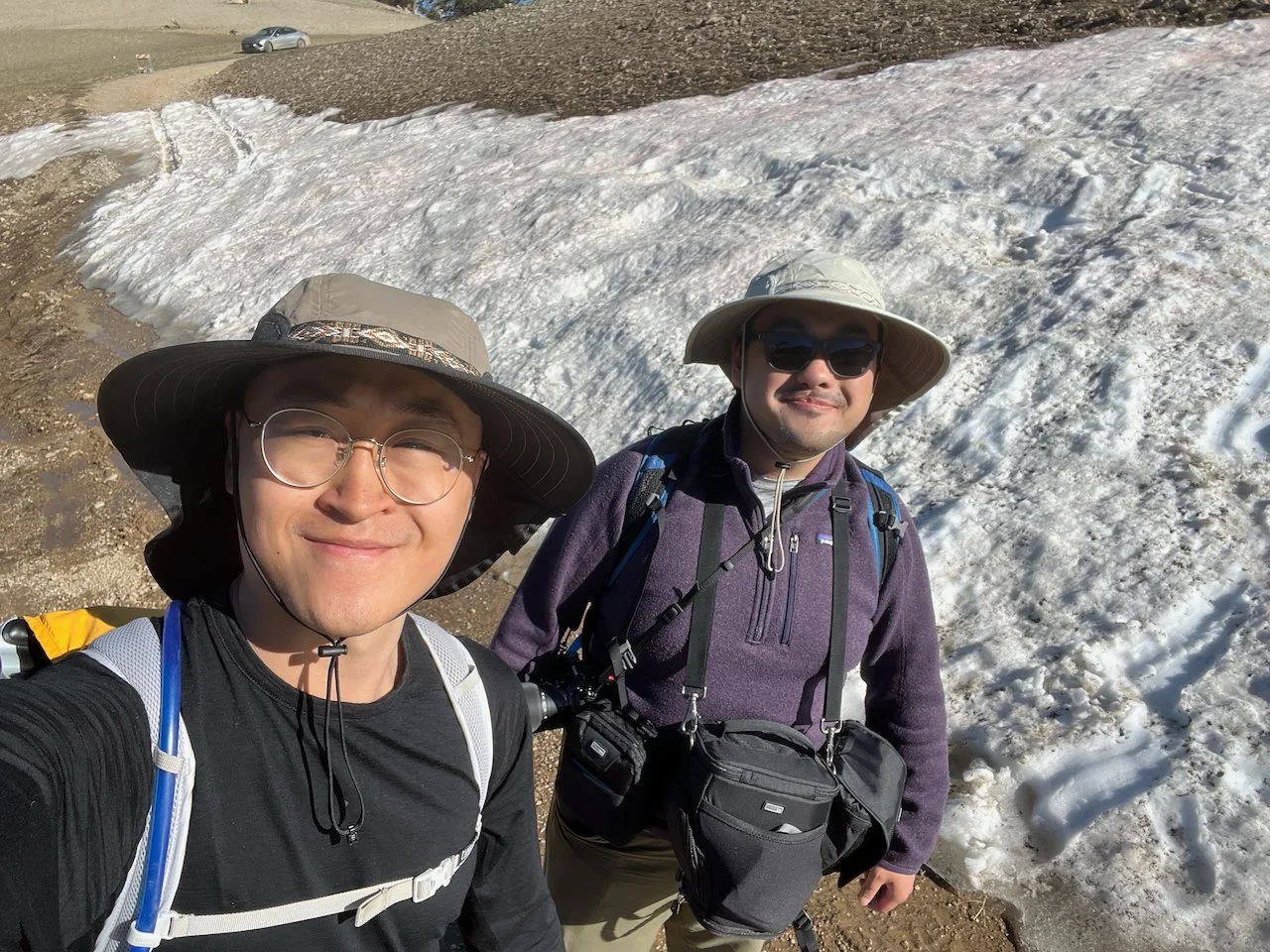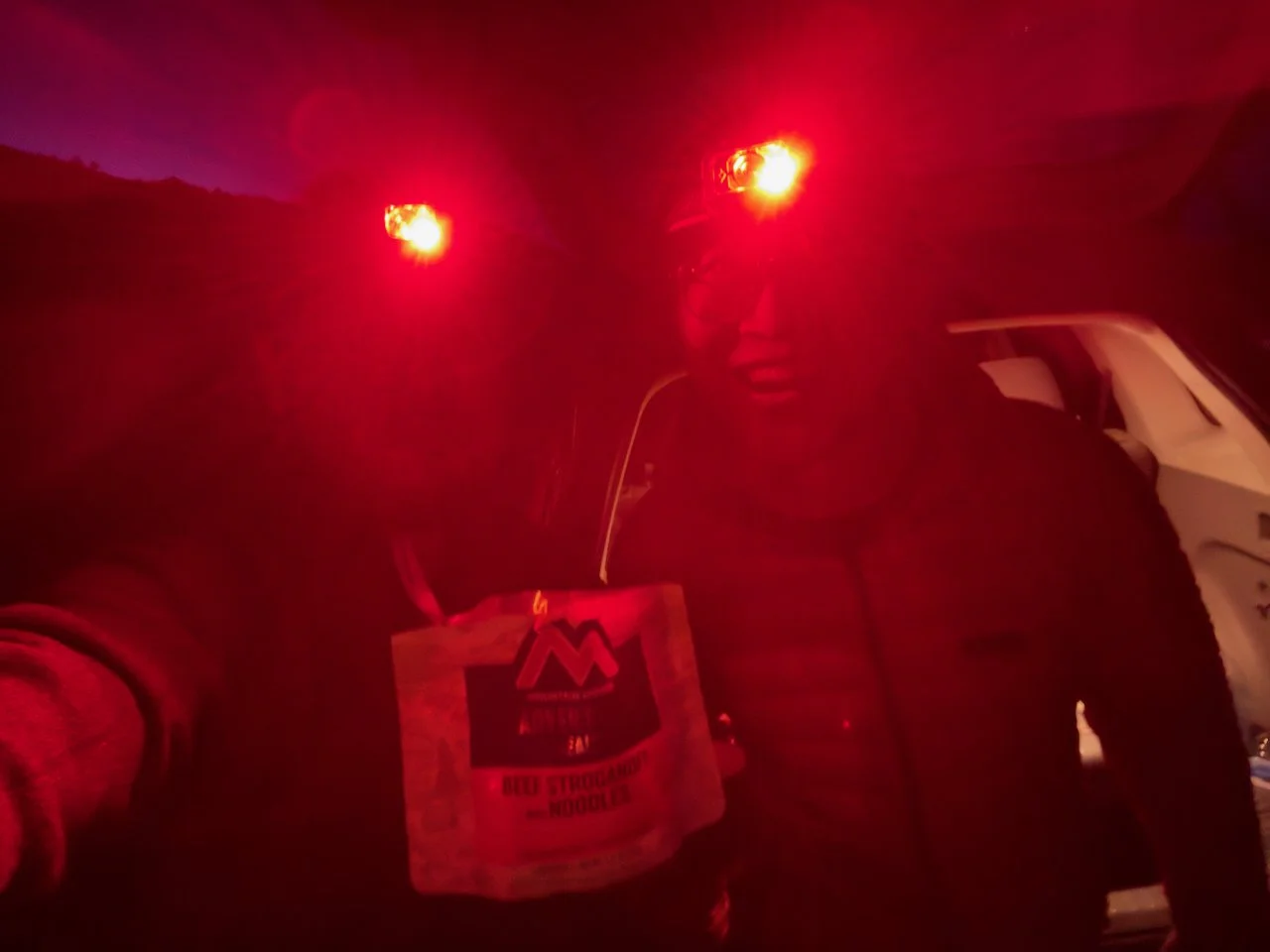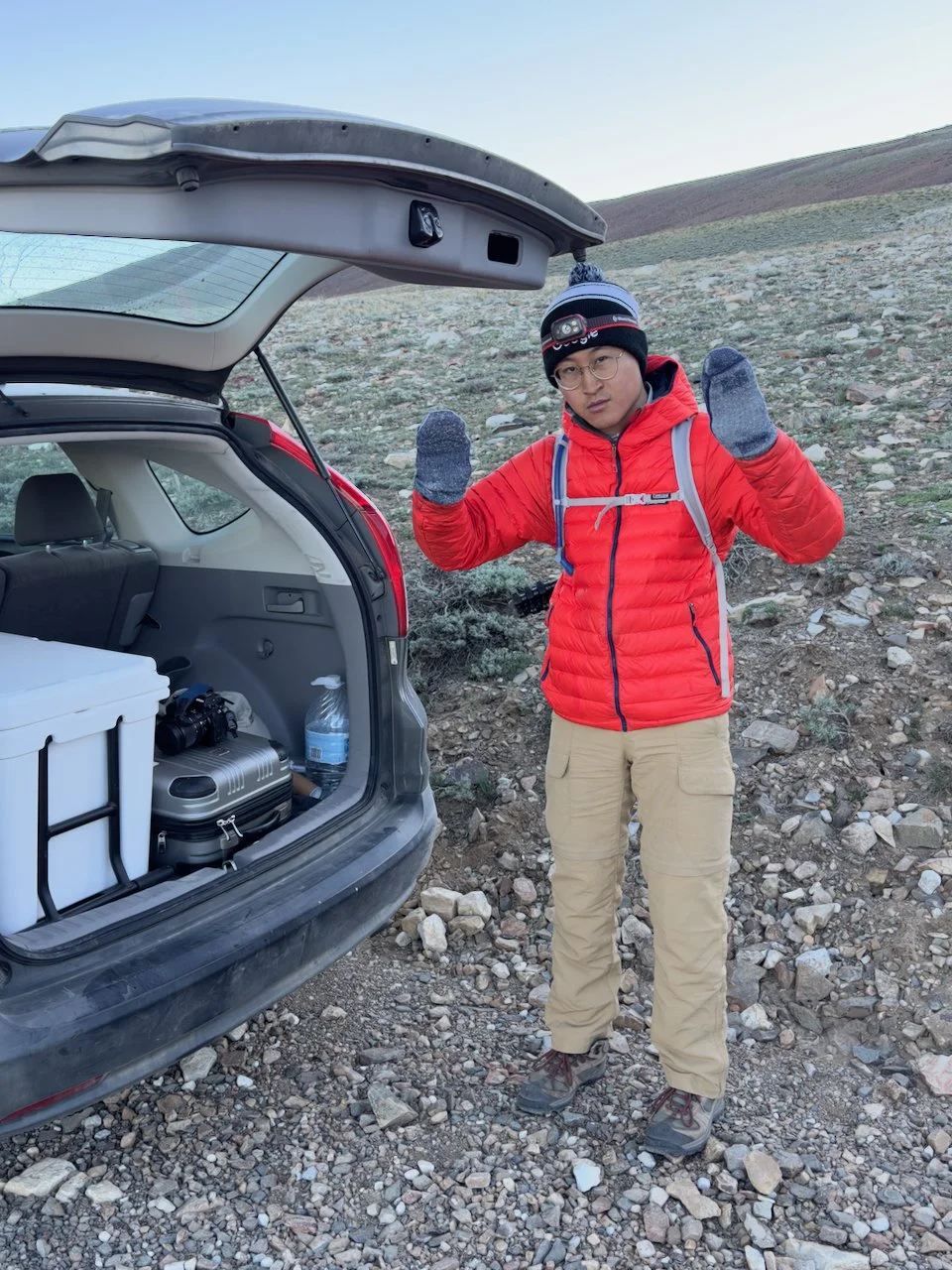Living Ruins
“The oldest pines are now but living ruins. Their trunks, 10 to 30 feet high, are little more than eroded stumps. Yet each possesses its life line, a few inches wide, of bark-covered growing tissue leading from partly bare roots to a thin crown of branches. And each still is able to produce cones occasionally, as it has for well over 4,000 years.”
-Edmund Schulman
“Spade, we've got a 4,000-plus tree with the center present!” shouted Edmund Schulman to his colleague M.E. Cooley.[i] Schulman, a dendrochronologist at the Laboratory of Tree-Ring Research at the University of Arizona, had spent two decades conducting field work as part of his search for the world’s oldest trees. His pursuit had brought him to the remote White Mountains of California, home of several groves of Great Basin Bristlecone Pines.
Schulman had sought out old trees as part of his focus on dendroclimatology, or the reconstruction of climate history using tree rings. At the time, bristlecones were largely ignored. Forest Service Ranger Al Noren and his second wife’s then husband had sampled a particularly large, 38-foot-wide bristlecone, known as “The Patriarch,” and sent the wood to a researcher at UC Berkeley in 1947 (the exact details of the story remain murky).[ii] Schulman had, in turn, learned of the trees’ existence through a colleague at Berkeley, and visited the White Mountains in 1953 to see the trees for himself. Though his own sample of “The Patriarch” yielded an age of just 1,500 years old, Schulman became intrigued by the possibility of even older trees.
Over the next few years, Schulman and his colleagues gathered more samples from other trees. In 1956, Schulman encounters three pines all older than 4,000 years. The news creates a minor sensation in newspapers around the country. Conventional wisdom had long understood Giant Sequoia to be the largest, and therefore oldest trees in existence. In contrast, the unassuming bristlecone pine seemed an unlikely candidate. The trees develop exceptionally slowly, in some instances just an inch in diameter per century, with an annual growing season less than two months long. Once mature, they stand a mere thirty to sixty feet tall at most. The trees cling, seemingly tenuously, to exceptionally rocky, alkaline soil, often on steep hillsides. Nevertheless, the humble bristlecone pine displaced Giant Sequoia from its perch.
The next year, Schulman made his most exciting discovery yet. On a summer night in 1957, Schulman had hunched over some wood samples with a lantern, meticulously examining each ring to determine the trees’ ages. As he recounted in a simplified and somewhat sensationalized account (encouraged by his editors at The National Geographic Magazine),[iii] “That evening I had our long cores from Great-granddad [the nickname for one of the trees] under the lens, and as I dated the outer centuries of rings and then went on to a quick count of the earlier rings, unusually crowded even for bristlecone, I felt excitement rise, for we were rapidly piling up the centuries.”[iv] His epiphany prompted him to shout the quote which began this article.
Eventually, Schulman dated the tree, which would come to be known as Methuselah, to be more than 4,600 years old. Later research pushed the age even further, to 4,853 years old. In other words, it started life while the last woolly mammoths roamed the Earth and was already two centuries old when the Egyptian pharaoh Khufu constructed the Great Pyramids at Giza. Methuselah, the current oldest, single living tree in the world, still stands somewhere in Schulman Grove, high in the White Mountains. Researchers have kept its exact location a secret from the public to protect the tree from vandalism.
The pavement ended with an ominous sign warning travelers of “sharp rocks ahead” and that “towing services are $1,000 minimum beyond this point.” On this late-spring weekend, I had driven up to the White Mountains in search of bristlecone pines to photograph. Twelve miles beyond this point laid Patriarch Grove, one of two main areas containing a significant population of bristlecones. The warning dissuaded me from venturing further in my Toyota Camry, at least for the moment.
I spent much of my trip at Schulman Grove, located just before the pavement ends on White Mountain Road. At this elevation, right around 10,000 feet, the bristlecone pine share much of their habitat with other surrounding trees. My attempts at photography were stymied by the density of trees in the forest. I returned to two particularly isolated examples, which I had first found on a previous trip in 2021. Some afternoon clouds overhead provided some dramatic atmospherics and storm light as the afternoon waned.
I returned to the same trees the next morning for sunrise and caught the moon positioned just above some branches. Morning alpenglow kissed the Sierra front range, on the far side of the Owens Valley.
Having photographed the same trees for two days, I started feeling antsy and sought out other bristlecones. I suppressed my doubts and drove gingerly onto the gravel portion of White Mountain Road, anxiously scanning the road surface for any sharp rocks. After driving for almost an hour (and for what turned out to be just three or four miles), I stopped at a spot in the road where there were several isolated bristlecone trees, both living and dead. I walked around and scouted out some compositions for when the light was right, and then waited for the sun to set.
I returned from the trip somewhat satisfied with my photos but remained dead set on returning to Patriarch Grove later in the summer. A week or two later, I floated the idea of revisiting to my friend Jonathan when I told him about the bristlecone pines, tucked away at the end of an hour-and-a-half-long drive on a rough gravel road. Surprisingly, he was interested. I had found a willing accomplice.
I returned to the White Mountains several weeks later along with Jonathan and his SUV. After setting up camp, we drove directly to Patriarch Grove, braving the tedious, suspension-crunching drive for an hour and a half. We hiked both loop trails at the grove, and even walked past “The Patriarch,” the large bristlecone pine sampled by Ranger Noren almost eighty years ago. Though there were fewer trees here than at Schulman Grove, we still had a very difficult time finding isolated ones to photograph. Our first day of photography ended in some frustration. After a halfhearted attempt to photograph sunset and twilight, we arrived back at our car, rehydrated and ate a freeze-dried dinner under the red glow of our headlamps, and drove back to our campsite in the dark.
Jonathan and I regrouped and returned the next day, but this time, we looked for trees overlooking the grove. Here we found the most photogenic trees were in fact the dead ones, whose branches had been stripped of all of their pine needles. Just above Patriarch Grove, at over 11,000 feet, the landscape turns to alpine tundra, a barren, rocky moonscape devoid of all vegetation except for some short, shrubby plants. That these bristlecones had grown here in the first place defied our imaginations. However, it also meant that we found the isolated subjects we had been looking for, far away from the clutter of a forest. The wind began to pick up as evening approached, and we began to feel the cold more acutely. Jonathan dug up a pair of wool socks out of his suitcase and put them over his hands for some makeshift mittens.
Once we were both suitably prepared for the cold and wind, we hiked around a scree slope, searching for trees to photograph with the coming sunset.
We finally arrived back at our campsite just before midnight, where we once again prepared some freeze-dried meals for a very late dinner, illuminated only by the dim red glow of our headlamps.
Schulman published his story of discovery in the March 1958 issue of National Geographic, sharing his discovery of the world’s oldest tree with 2.1 million readers. Unfortunately for Schulman, he did not live to see the newfound fame his work would bring him. He had long struggled with health issues. On January 8, 1958, the same day that the magazine’s editor-in-chief greenlit the article for publication, Edmund Schulman suffered a cerebral hemorrhage during a meeting on the University of Arizona campus. He died two hours later, aged just 49. The oldest trees in the world provided a painful, ironic contrast to the untimely death of the man who made them famous.
Schulman died before he had the opportunity to see the full implications of his work. Just as he had hoped, bristlecone tree rings revolutionized climatology. Through painstaking and meticulous work, dendrochronologists have pieced together a “master chronology” from dead and living bristlecone pines that now stretches back 8,837 years (researchers at the LTRR have theorized that this record may extend back 11,200 years, but more research is needed). This chronology, combined with information from a variety of other disciplines including history and geology, has allowed researchers to reconstruct historical climate conditions going back millennia.
The master chronology also revolutionized other fields. For much of the twentieth century, most archaeologists had assumed that Western Civilization began in ancient Egypt and had spread outwards through a process of cultural diffusion. Scholars posited that “most of the important innovations and advances in human culture occurred only once and were transmitted by contact to other areas.”[v] Before the advent of radiocarbon dating, scholars could only rely on written records to definitively establish absolute dates, the oldest of which come from before 3000 B.C. in Ancient Egypt. Scholars assumed that human civilization began there and then spread outward. Archaeologists were able to piece together a chronology of the Egyptian pharaohs and used that as a rough metric for determining the age of other civilizations.
Cracks in this theory began to form with the advent of radiocarbon dating in 1949. All living organisms absorb carbon-14 (or C-14), a radioactive isotope of carbon. The compound forms as a result of cosmic ray bombardment, in which radiation from the sun interacts with nitrogen in the Earth’s atmosphere. When organisms die, they stop absorbing carbon-14, and it starts to decay into other atoms. Scientists can then measure the amount of C-14 left, compare it with its ratio to carbon-12 (regular carbon), and estimate the age of a given object.
For the first time in history, archaeologists now had a new method of determining the age of ancient artifacts. Willard Libby, the chemist who pioneered radiocarbon dating and would go on to win a Nobel Prize for it in 1960, dated Egyptian artifacts using his method and found a glaring issue. The radiocarbon dates of the artifacts he tested contradicted their age determined through pre-existing Egyptian historical sources. In fact, radiocarbon dating of other objects from Western Europe indicated that civilization there predated that of Egypt.
The seeming discrepancy baffled archaeologists and persisted for years. Radiocarbon dating initially relied upon several assumptions, most notably that carbon-14 levels in the Earth’s atmosphere, and the ratio of carbon-14 to carbon-12 (the stable form of carbon), had both remained constant throughout history. In fact, another researcher, Hans Suess, discovered that opposite was true. Suess began working with Wesley Ferguson, one of Schulman’s younger colleagues at the Laboratory of Tree-Ring Research, to calibrate the radiocarbon curve using the bristlecone-based master chronology Ferguson had begun piecing together. Two other members of the lab, Val LaMarche and Tom Harlan, assembled their own using wood from another site in the White Mountains.
By 1973, both teams had assembled corroborating tree ring data spanning 5,000 years. This wood, tiny chunks of which were fed through spectrometers, allowed researchers to calibrate their radiocarbon dates to known years determined through the tree rings. Their efforts helped to finally resolve the radiocarbon contradiction. As archaeologist Colin Renfrew observed, “Radiocarbon dates before 1200 B.C. [had] to be ‘calibrated’—revised, using such a curve, and set several centuries earlier. Back at 3000 B.C. the necessary change is as much as 800 years. These changes [brought] with them a whole series of alarming reversals in chronological relationships.”[vi]
The hard work of Suess, Ferguson and other researchers helped confirm that civilization in Western Europe did begin far earlier than archaeologists originally theorized. The diffusionist model began to crumble irrevocably. Renfrew explained the tectonic shift this way: “The megalithic tombs of western Europe now became older than the Pyramids or the round tombs of Crete, their supposed predecessors. The early metal-using cultures of the Balkans antedate Troy and the early bronze age Aegean, from which they were supposedly derived. And in Britain, the final structure of Stonehenge, once thought to be the inspiration of Mycenean architectural expertise, was completed well before the Mycenean civilization began.”[vii] Bristlecone pines had indirectly sparked a revolution in the field of archaeology, fundamentally changing our understanding of prehistory.
Though the trees have survived thousands of years in some of the most inhospitable conditions imaginable, they face an uncertain future. As the climate warms, their habitats will likely shift. A 2007 paper from Christopher Van de Ven predicted that, “As temperatures increase, [bristlecone pine] migrates to higher elevations, abandoning the Schulman and Patriarch Groves…after 2° and 5°C temperature rises, respectively.”[viii]
In 2018, Constance Millar, a research ecologist with the U.S. Forest Service, discovered a stand of bristlecones in Death Valley National Park devastated by bark beetles, insects whose spread has been hastened by climate change. Millar and her fellow researchers, who published a paper on the topic in 2022, had previously thought that unlike other pines, bristlecones were resistant to bark beetles due to a higher concentration of terpenes, a type of pitch or tree resin which contains chemical compounds that repel insects. However, those defenses have fallen short in a changing climate. “Heat, as well as precipitation, causes stress for these trees, and so that has created a situation where they're less able to withstand or resist the invasion of the bark beetles,” explained Dr. Millar in an interview. “So with the increasing trend toward droughts which we've had…the trees become less able to produce those terpenes.”
When asked if the bristlecones in the White Mountains were at risk, Millar replied, “That's the million-dollar question, and the million-dollar terror.” She went on to elaborate: “We really don't know enough. On the other hand, the important thing that I hope the Inyo National Forest and our forest service entomologists are doing is monitoring, because there are, as we alluded to in the paper, some ways that we might curtail an outbreak, if we got to it early enough.”
Despite the uncertainty, Millar did express some optimism for the future. Her decades of work on climate change led her to caution against assuming that bristlecones will eventually disappear from the White Mountains entirely. “I have been accused of being a bit Pollyannaish, but I also feel like there's a…doomsday focus in the whole climate change arena, and so I try to look at the things that I study with as much open mind as possible,” said Dr. Millar. She explained that as temperatures increase, lower-elevation canyons, previously too cold for bristlecones, can start to grow them. In addition, the prospect of bark beetle infestations does not necessarily spell a death sentence for bristlecone pines. Increased monitoring and preventative measures can mitigate or prevent outbreaks. Further research can help scientists better understand the issue and find best practices.
However, all this requires adequate funding for land management agencies like the Forest Service, which have been chronically underfunded for years. In tackling an issue as monumental as climate change, that seems like a good first step.
I would like to thank Dr. Constance Millar (Scientist Emerita with the U.S. Forest Service) and Dr. Malcolm Hughes (Regents' Professor Emeritus at the Laboratory of Tree-Ring Research, University of Arizona) for allowing me to interview them about bristlecone pines. Their expertise and book/article recommendations helped make this piece possible. Thank you also to Blake Johnston, who drum scanned the film for many of the pictures shown here.
If you enjoy this content and would like to help me offset the cost of buying film and maintaining the website, I would appreciate your financial contribution! You can donate HERE.
Endnotes
[i] Edmund Schulman, “Bristlecone Pine, Oldest Known Living Thing,” The National Geographic Magazine, March 1958, 366.
[ii] Donald J. McGraw, Edmund Schulman and the “Living Ruins”: Bristlecone Pines, Tree Rings and Radiocarbon Dating (Bishop, CA: Community Printing and Publishing, 2007), 96-97.
[iii] Jared Farmer, Elderflora: A Modern History of Ancient Trees (New York, NY: Basic Books, 2022), 248.
[iv] Schulman, “Bristlecone Pine, Oldest Known Living Thing,” 366.
[v] Colin Renfrew, Before Civilization: The Radiocarbon Revolution and Prehistoric Europe (Harmondsworth, Middlesex: Penguin Books, 1976), 18.
[vi] Ibid., 76.
[vii] Ibid., 76-77.
[viii] Christopher M. Van de Ven, S. B. Weiss, and W. G. Ernst, “Plant Species Distributions under Present Conditions and Forecasted for Warmer Climates in an Arid Mountain Range,” Earth Interactions 11, no. 9 (July 1, 2007): 1–33, https://doi.org/10.1175/ei205.1, 18.
















